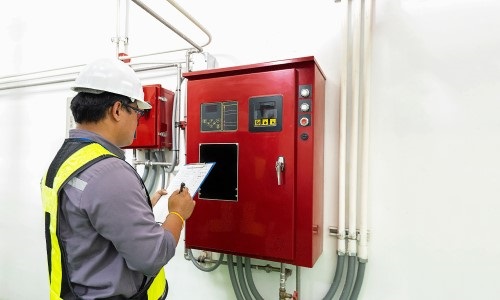
4.28.22 – SSI – Shane Clary
Fire/life-safety expert Shane Clary reviews changes and additions to Chapters 14 and 10 in the 2022 Edition of NFPA 72.
This month’s column shall be a continuation of my discussion on changes to NFPA 72, National Fire Alarm and Signaling Code, 2022 edition that was released in August 2021 by the NFPA Standards Council. Before I dive into that discussion, a few industry updates.
It does appear that after a two-year period, the National Fire Protection Association (NFPA) will hold a live annual meeting this June in Boston. It will be good to be able to have discussions with colleagues in person as opposed to just on the phone or in virtual meetings.
While this month’s column is on changes to the 2023 version of NFPA 72, the work for the 2025 edition has already started. The closing date for Public Inputs is June 1, 2022. If you have any suggested changes to this document, now is the time to submit those changes. You do not need to be a member of the NFPA to submit a Public Input.
I would also like to give an acknowledgement to Daniel Finnegan, manager of Industry Affairs for Siemens. After a long career, first in the fire service and then with Siemens, Dan is retiring. He was very active within the NFPA, ICC and the Fire and Life Safety Section of the Int’l Association of Fire Chiefs.
A number of significant changes and additions to NFPA 72 and the International Fire Code first started with Dan. His leadership and insights will be missed as he begins to enjoy a well-earned retirement.
Now back to the 2022 edition of NFPA 72. Chapter 14, Inspection, Testing and Maintenance is the first chapter that I will cover this month. A new section on observation has been added. This will allow for the inspector or technician to comment on corrections, improvements or enhancements to the system that is not viewed to be an impairment or deficiency to the fire alarm or signaling system. As such, the building owner is not required to take any actions regarding these observations unless in the future they would become an impairment or deficiency.
Associated with Chapter 14 is a new Annex I, Color-Coded Tagging Program. The use of the tags is not a requirement of NFPA 72, but it does parallel the requirements that are found in a number of states. There are two suggested color tags, yellow and red. The yellow tag is to be used if one or more deficiencies are noted during the inspection and/or test of the system. A red tag is to be used if any part of the system is found to be inoperable or impaired. While these color-coded tags are in the annex of 72, an AHJ could make this annex a requirement within their jurisdiction.
Moving to Chapter 10, Fundamentals, there is a change that is closely related to the maintenance of a system. Prior editions of 72 have required that the date of manufacture be marked on the batteries that may be within a fire alarm control unit or additional power supplies. With this edition, the installer must also label the system batteries with a replacement date that does not exceed four years from the installation date. It will then become a requirement to replace the batteries on or before that date.
In addition, beginning Jan. 1, 2024, all rechargeable batteries that are used as the secondary power supply for a system shall be listed for use for the control or remote power supply. The listing would be from a nationally recognized testing laboratory.
In performing standby battery calculations, there is a change as to how the calculation is to be done. For several editions of 72, the requirement was to add a 20% safety margin. This has been changed to now require a correction factor of 1.25 for battery aging, so as to ensure that the battery can still meet its demand at the end of its service life.
Chapter 10 also now requires that all system devices, appliances and equipment that may be abandoned, be marked “not in service” until removed. In next month’s column I shall continue with the discussion on changes to NFPA 72.
